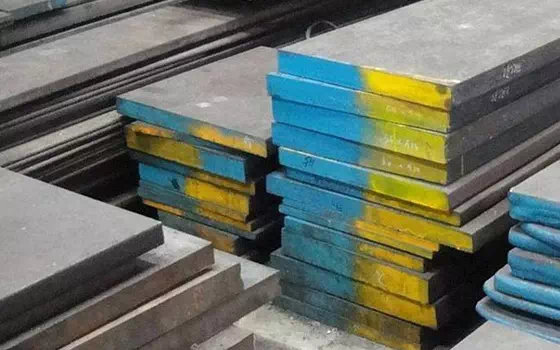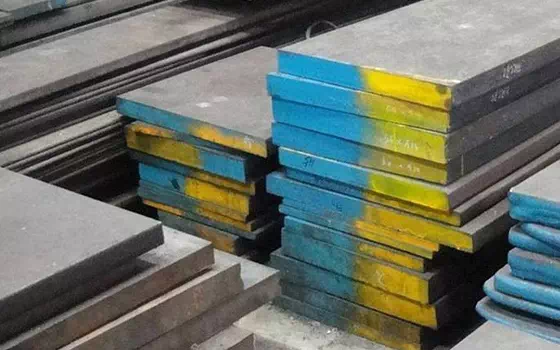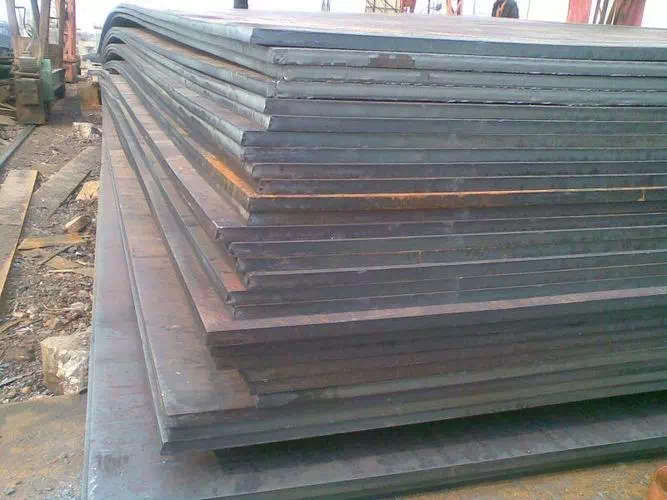Welcome to Zhishang Steel Co., Ltd.
TEL: (Gavin) +86-15665898999 | Email : info@zhishangsteel.com

1. Types of carbon structural steel
Non-standard designers are most often exposed to common materials:
Q235A (old national standard A3), Q235B, 45 steel, 65Mn, 40Cr;
2. Q235A (A3 steel) features and uses
Q235 Feature 1: Has high plasticity, can be processed into different shapes of parts according to the need, and has a certain strength, suitable for a variety of machining and stamping forming.
Such as our common Angle steel, channel steel, rectangular pipe and I-steel.
Q235 Feature 2: Good toughness and weldability.
Q235 steel plate in the welding, generally do not need preheating and post-welding heat treatment and other special process measures, do not need to choose complex and special equipment.
The higher the carbon content in carbon steel, the worse its weldability. Because the higher the carbon content, the greater the hardening tendency of the welding heat affected zone of the steel (the hardness of the welding zone and the non-welding zone changes), the more likely it is to crack.

Use of Q235
Q235 series carbon steel includes A, B, C, D four series.
Q235 series carbon steel has high plasticity, toughness and welding performance, cold stamping performance, as well as a certain strength, good cold bending performance. Therefore, the practical performance is good, and the price is relatively cheap, about 6 yuan /KG, cost-effective.
Application examples: Widely used in carburized or cyanide parts and welded structures with low core strength requirements. Such as tie rod, connecting rod, hook, coupler, bolt, nut, sleeve, shaft and welding parts (such as frame, connecting plate, bracket, large base plate, etc.). Grade C and D are used for important welding structures.
The mechanical properties cannot be changed by heat treatment, but the internal stress can be eliminated by annealing after welding;
Common surface treatment methods: hard chrome plating, blackening, surface spraying (baking paint), etc.
The difference between cold and hot rolling
The common profile is hot rolled molding.
Temperature: Cold rolling is carried out at room temperature or low temperature, while hot rolling is carried out at high temperature, usually above 1000 ° C.
Product performance: Because the cold-rolled sheet has finer grains and does not have too much thermal stress, its properties such as strength, toughness and surface quality are usually better.
Cost: Compared to hot rolling, cold rolling has a higher raw material cost, but because there is no need for heating and cooling equipment, the processing cost is lower.
Forming method: The cold-rolled steel allows local buckling of the section, so as to make full use of the bearing capacity of the bar after buckling; The hot rolled steel does not allow the section to undergo local buckling (local buckling is if the processing of rectangular tubes, not standard rectangles, may be concave in the middle).
Residual stress distribution: The residual stress distribution on the section of cold-formed thin-wall steel is curved, while the residual stress distribution on the section of hot-rolled or welded steel is thin film.
Torsion resistance: The torsion resistance of hot-rolled steel is better than that of cold-rolled steel.
Surface quality: cold plate using cold rolling processing surface without oxide skin, good quality; The surface of the hot plate is processed by hot rolling, and the thickness of the plate is poor, so the thickness cannot be guaranteed.
3.45 steel characteristics and uses
45 steel is the most commonly used carbon tempered steel in high-quality carbon structural steel, the price is about 8 yuan /KG.
High strength, good plasticity and toughness, good machinability, and good comprehensive mechanical properties after tempering.
There is a tendency to crack when water quenching, and parts with complex shapes should be quenched in hot water or oil. Tempering treatment should be used for small parts and normalizing treatment should be used for large parts.
Poor weldability, but still can be welded, preheat before welding, annealing after welding.
Application examples: It is used to make small section tempering parts with large load and large normalizing parts with small stress, as well as surface hardening parts with low core strength requirements, such as crankshaft, drive shaft, gear, worm, key, pin, etc.
It is relatively difficult to process 45 steel after tempering treatment. Due to its hardness, strength and toughness are improved, the wear of the cutting tool is accelerated during the cutting process, and higher cutting resistance is generated, resulting in poor machining surface roughness.
Surface treatment method:
45 steel surface strength strengthening heat treatment there are normalizing, normalizing + tempering, tempering, local surface high temperature quenching four, after the heat treatment also need to carry out anti-rust treatment, nickel plating, black plating, chrome plating, galvanized and other operations.
4. Features and uses of 40Cr
The tempered 40Cr is a kind of alloy structural steel, because it has high strength, high hardness, high wear resistance, high corrosion resistance and other good comprehensive mechanical properties.
It is widely used in the manufacture of shaft parts and crankshaft, crank, automobile steering knuckle, connecting rod, gear, bolt and so on.
The hardenability of 40Cr is good, it can be quenched through to 28 ~ 60mm when water is quenched, and the complex shape parts are easy to crack when water is cooled, and the cold bending plasticity is medium. Oil quenching can be quenched to 15 ~ 40mm, improve the fatigue strength of the material. Table hardening hardness is 48~55HRC.
When the hardness is 174 ~ 229HB, the relative machinability is 60%.
Surface quenching: 40Cr quenching 850℃, oil cold; Tempering 520℃, water cooling, oil cooling. The surface quenching hardness of 40Cr can reach 52~60HRC, and the flame quenching can reach 48~55HRC.
Nitriding treatment: 40Cr belongs to nitriding steel, and the elements contained in it are conducive to nitriding. The maximum hardness of 40Cr nitriding treatment can reach 72~78HRA, and the core hardness can reach 43~55HRC.
The purpose of tempering treatment is to improve the hardness, strength and wear resistance of metal materials, which is suitable for the manufacture of medium-speed and medium-load parts, such as machine tool gears, shafts, worms, spline shafts, etc.
In the tempering process, the first fire is quenching, that is, the metal workpiece is heated to a certain appropriate temperature and maintained for a period of time, and then it is quickly cooled, the purpose is to change the internal structure of the metal and obtain the characteristics of hard and tough inside.
The second fire is high temperature tempering, which is to heat the metal workpiece after quenching to a certain temperature, hold it for a period of time, and then slowly cool down, in order to make the brittleness generated by quenching disappear, while giving the metal workpiece a certain strength and toughness.
The purpose of tempering treatment is to reduce the hardness and brittleness of metal materials and increase the toughness and ductility of materials. Improve the machinability and weldability of materials, as well as eliminate internal stress.
Tempering treatment temperature is usually about 850℃-950℃ than tempering treatment temperature 450℃-700℃ higher. In addition, the time of tempering treatment is several times shorter than that of tempering.
Technical requirements for the expression of hardness after heat treatment of medium materials:
Example 1: The hardness after tempering is 200-250HB;
Example 2: Temper to 45-50HRC after quenching;
HRC and HB represent Rockwell hardness and Brinell hardness, respectively.
In general, HRC (HRC and HRA only apply different loads when testing hardness) is suitable for extremely hard materials, such as hardened steel;
HB is suitable for when the material is soft, such as non-ferrous metals, steel before heat treatment or after annealing.

5. Characteristics and uses of 65Mn
65Mn is an alloy steel with high strength, hardness and wear resistance, its yield strength is 630MPa, tensile strength is 750MPa, hardness is HRC32-47.
In addition, 65Mn steel also has good hardenability and low toughness, which can withstand large shocks and vibrations. Therefore, 65Mn steel is widely used in the manufacture of various mechanical parts and structural parts, such as gears, shafts, bolts, springs, etc.
High strength, large hardenability, water quenching is easy to crack, decarburization tendency is small, but there is overheating sensitivity, easy to form quenching cracks, and temper brittleness. The welding performance is not good, can not be used as a welding component.
Suitable for making a variety of large size of flat, round springs and spring, and other agricultural machinery parts subjected to friction, such as plows, cutting knives, etc., can also make light load vehicle clutch spring, medium load plate spring, butterfly spring, valve spring.
6. Q235B features and uses
Q235B is a low-carbon structural steel with good weldability and plasticity, which is widely used in various structural and engineering steel pipes.
Good welding performance: Q235B steel has excellent welding performance, so that the spiral steel pipe can form a uniform and firm weld during the welding process.
Excellent plasticity: Q235B steel has good ductility and toughness, so that the spiral steel pipe can produce a certain deformation under the action of stress, but not easy to break.
High strength: Q235B spiral steel pipe due to its uniform spiral weld structure, has high strength and carrying capacity, so it can be used to withstand the pressure is not very large gas container.
Good corrosion resistance: Q235B spiral steel pipe surface after special treatment, has good corrosion resistance, can resist a variety of environmental factors erosion.
Wide application field: Q235B spiral steel pipe can be customized according to different requirements of various specifications and wall thickness to meet a variety of engineering needs. Widely used in municipal engineering, construction engineering, water supply engineering and other fields, such as water pipelines, drainage pipelines, gas pipelines and so on.
Economy: Compared with other metal pipes, the price of Q235B spiral steel pipe is more affordable, which can reduce the cost of pipeline construction and maintenance.

Zhishang Steel has always been a pioneer in custom steel and special supplies, and has been recognized for its efforts in enhancing work efficiency and product quality. In addition to ISO9001:2015 certification, we also adhere to strict quality policies and proprietary procedures. If you have any questions, please contact us to provide the best type of product solution for your pre-painted, coil coating metal process, we will closely support after-sales service to ensure that your subsequent problems can be solved in a timely manner, if you have any questions, please send email to info@zhishangsteel.com, we look forward to serving you.

Zhishang Steel, specializing in domestic steel products trade, warehousing, processing and other services. The team has four service teams: Shandong Zhishang Steel Co., LTD., Shandong Zhiyiheng Trading Co., LTD., Tai 'an Zhishang Economic and Trade Co., LTD., Shandong Zhishang Steel Structure Co., LTD. Mainly engaged in steel coil, coated, stee···